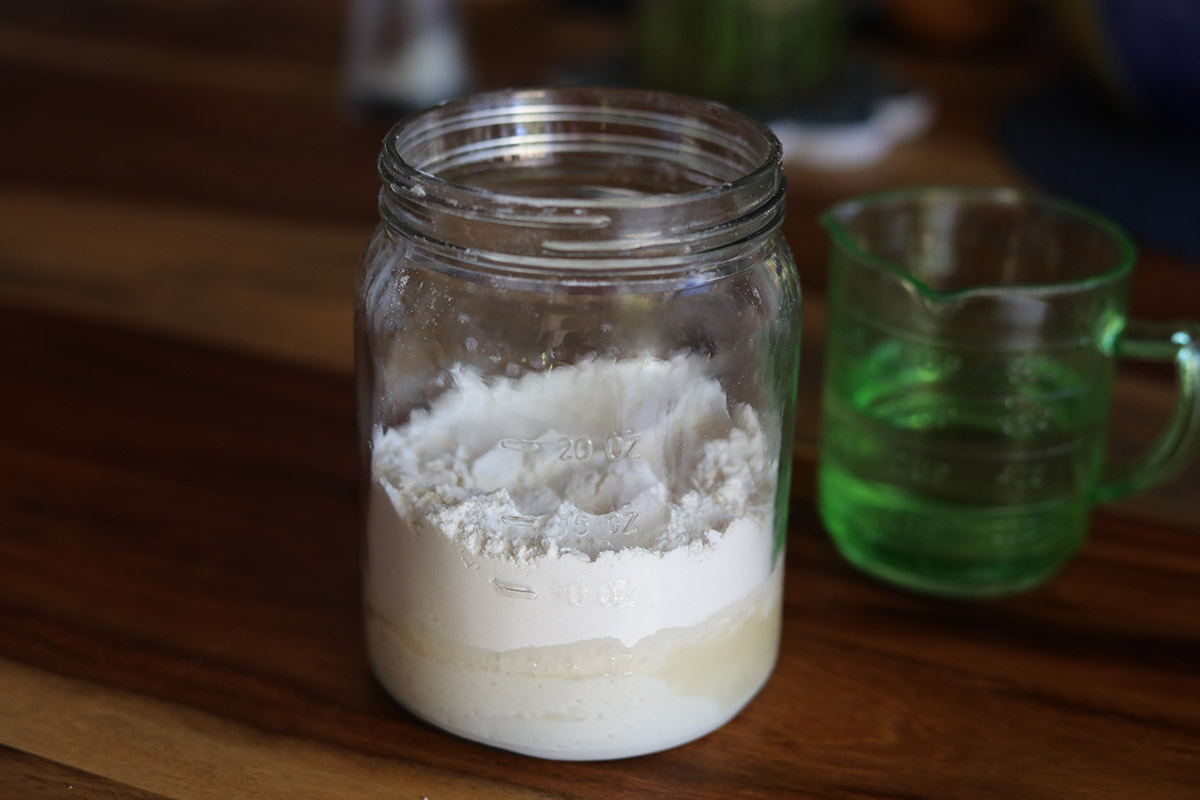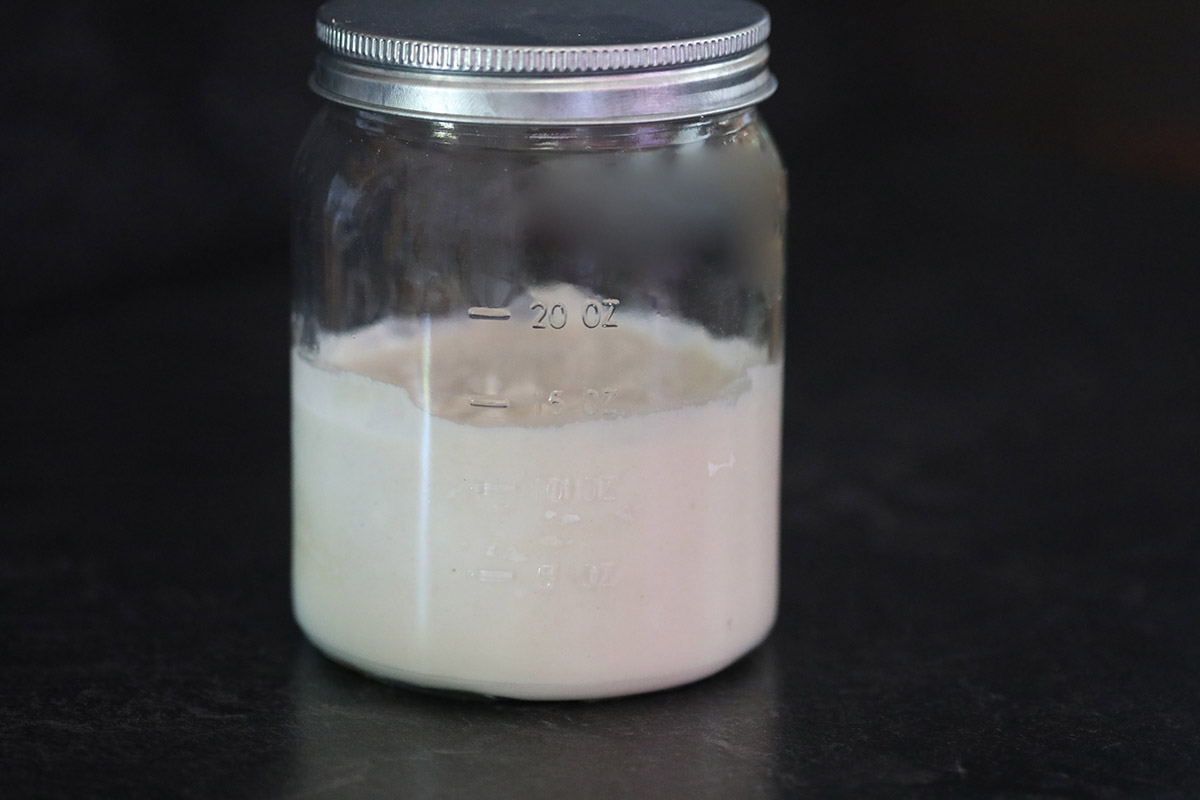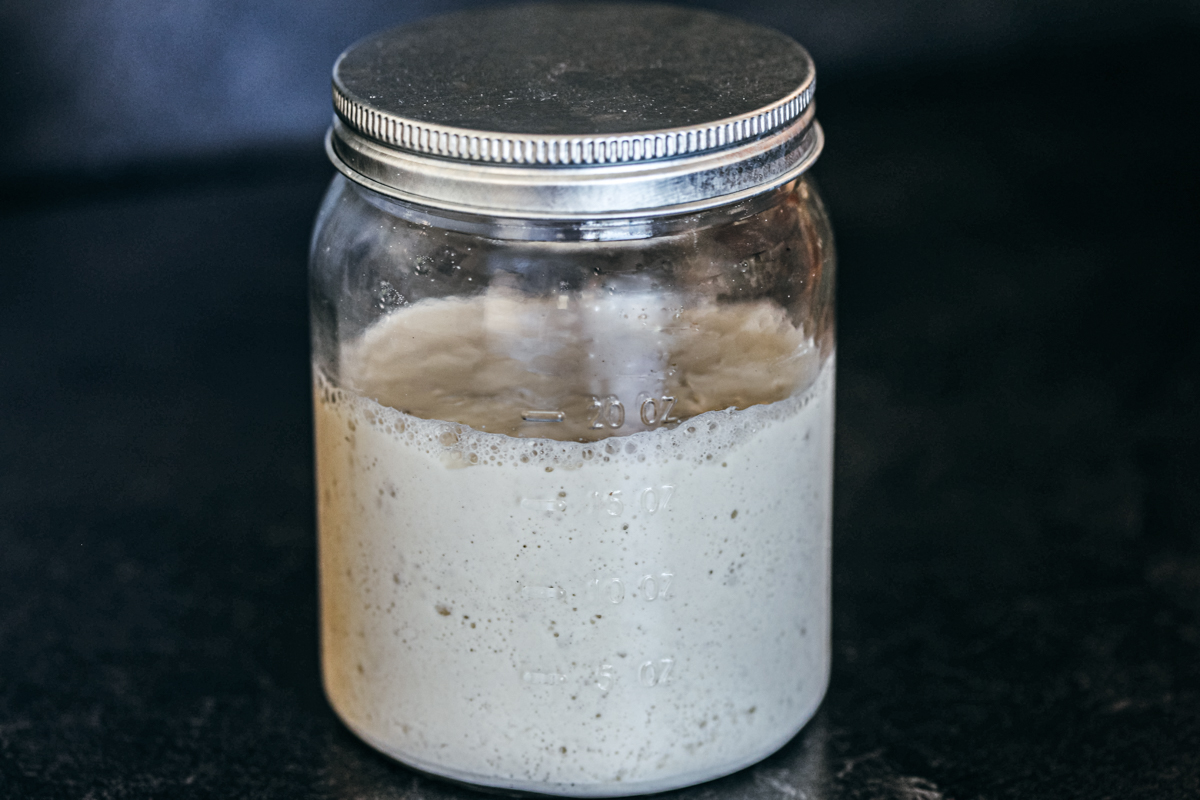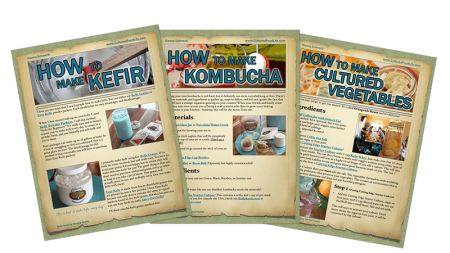
Sourdough FAQs
Helpful Tips for sourdough bread
The secret to good sourdough bread is in the bubbly sourdough starter. (You can buy my live starter here.) To make a really bubbly sourdough starter, you must feed it a ratio of one to one to one. So what this means is 1/2 cup of sourdough starter and 1/2 cup flour and 1/2 water. You can make more starter than this, but always keep the ratio 1 to 1 to 1 and you will have a really bubbly sourdough starter.
Always feed the starter the night before (or at least 4 to 8 hours before you make your bread). This all depends on the temperature in your home. The warmer it is, the sooner it will rise and be bubbly. Once your starter begins rising in the jar and is filled with bubbles on the top and sides it's ready to go.
Make sure that you have been feeding the starter at least once a week if you have been keeping it in the fridge. If you haven't been feeding your starter this often, then feed it twice a day for a day or a couple of days until it's bubbly again. Here's a link to make a strong sourdough starter.
Keep your dough on the moister side. Add less flour and it will rise higher and have a lighter taste and will also have more holes if you like this in sourdough bread.
Use flour with a higher protein content as this allows for a high rising sourdough bread. Check out #7 on the FAQ Sourdough page on how to calculate how much protein your flour has.
Frequently Asked Questions About Sourdough
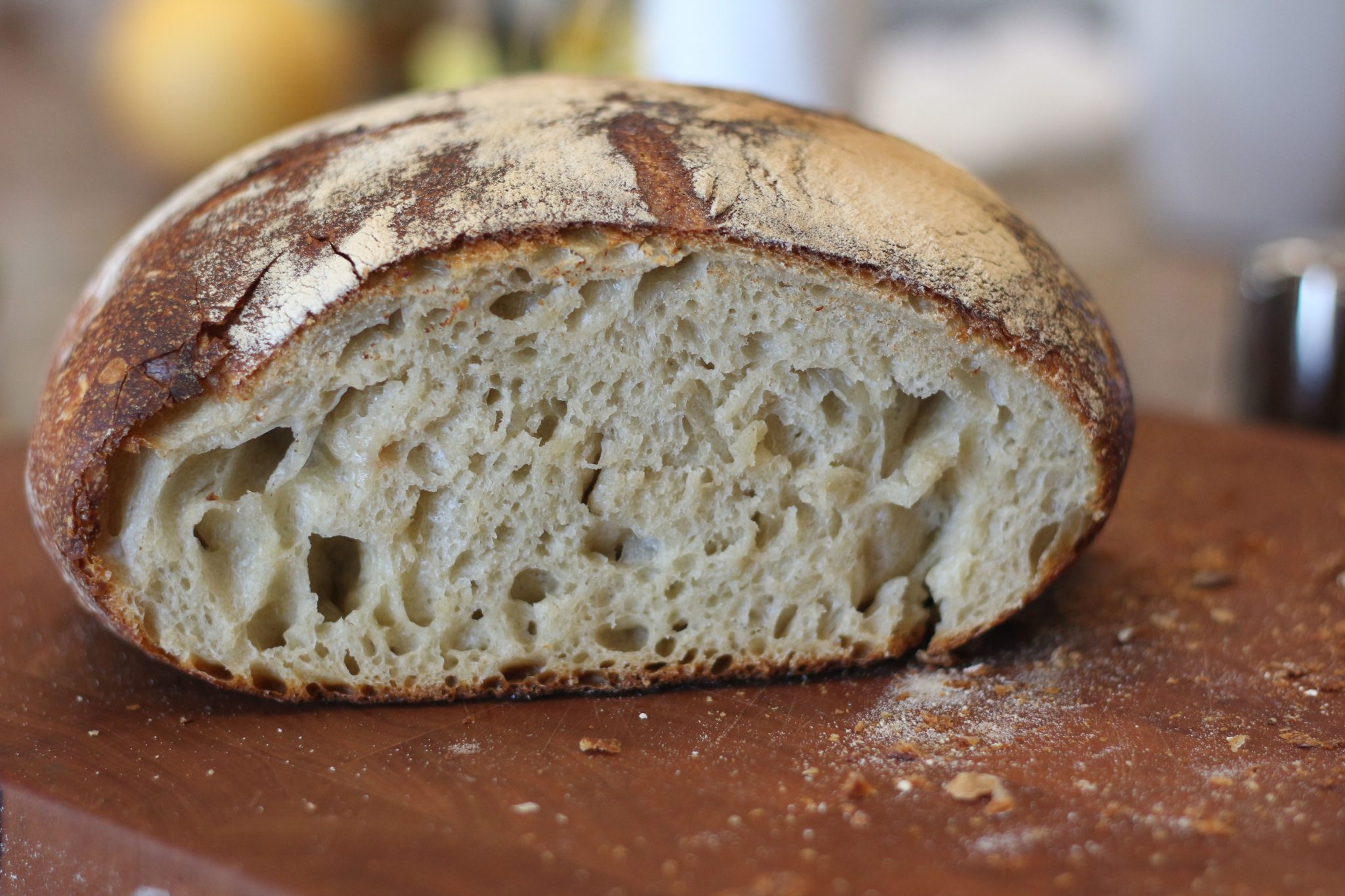
Are the bacteria in sourdough bread killed when you bake the bread?
Anytime you heat bacteria above 115 degrees you kill the beneficial organisms. There has been much speculation and research that says the internal part of the sourdough bread doesn't get hot enough to kill the bacteria. However, the transformation of the bread has already taken place during the rising phase. The bacteria unlock the nutrients, and the vitamins and minerals become more accessible.
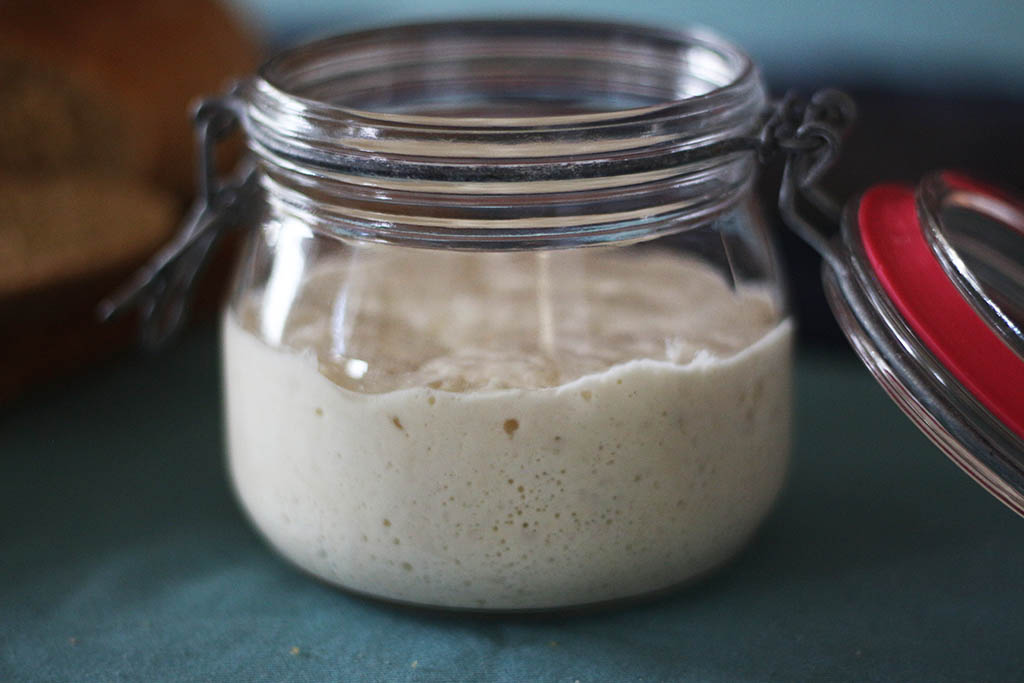
My starter is bubbly but not rising. Can I use it?
Your starter must be rising in the jar, as this is how you’ll know it’s ready to use. If it is just bubbly but not rising, you need to feed it until it starts to rise in the jar. Then it’s ready to raise your bread. Find a warm spot where your starter can thrive. Take 1/4 cup of your starter (don’t use more than this), and 1/2 cup water, and 1/2 cup flour. Stir all this together and leave on the counter for 4 to 8 hours and feed it again every 4 to 8 hours until really bubbly. Then it will be ready to make bread. A sourdough starter is like a pet and you have to feed it and make it strong. Then it will raise your bread much better. Check out this article for more info: How to Care For Your Sourdough Starter
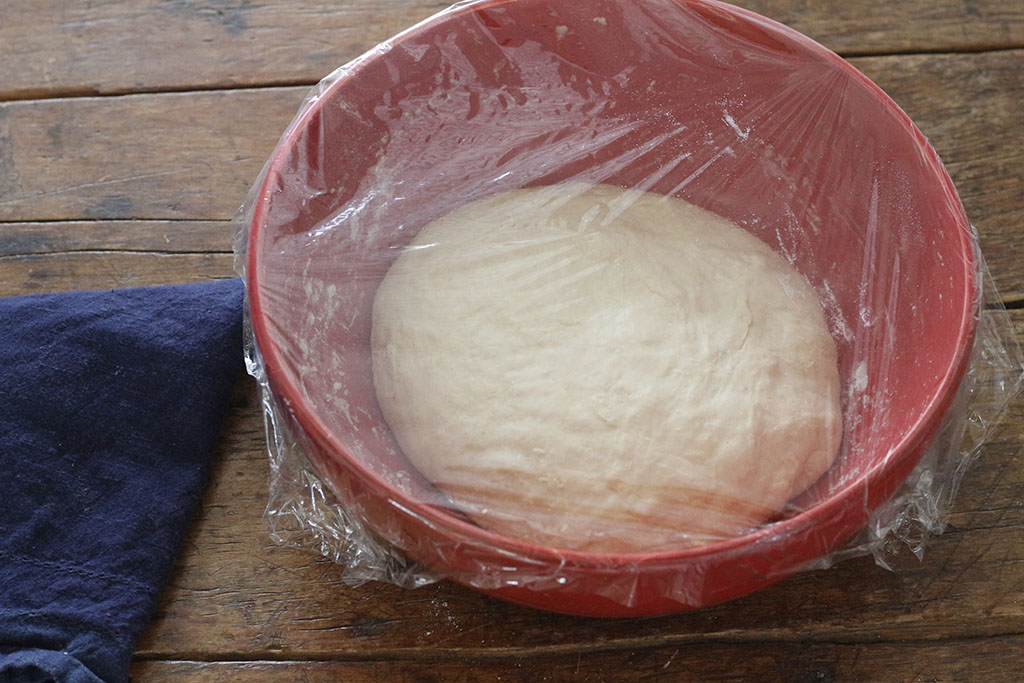
Why is my bread taking forever to rise?
It’s most likely that your sourdough starter is not active enough. Temperature can also slow down the rising process, but it is likely that your starter was sluggish and not fed enough. Let the starter sit on the counter and see if it will rise. It may just take longer, but if it does not rise, then your starter needs to be revived. To revive your starter, take 1/2 cup of your starter (don’t use more than this) and 1/2 cup water and 1/2 cup flour. Stir all this together and leave on the counter for 4 to 8 hours and feed it again every 4 to 8 hours until really bubbly. Then it will be ready to make bread. Let me know how it does or if you need more help.
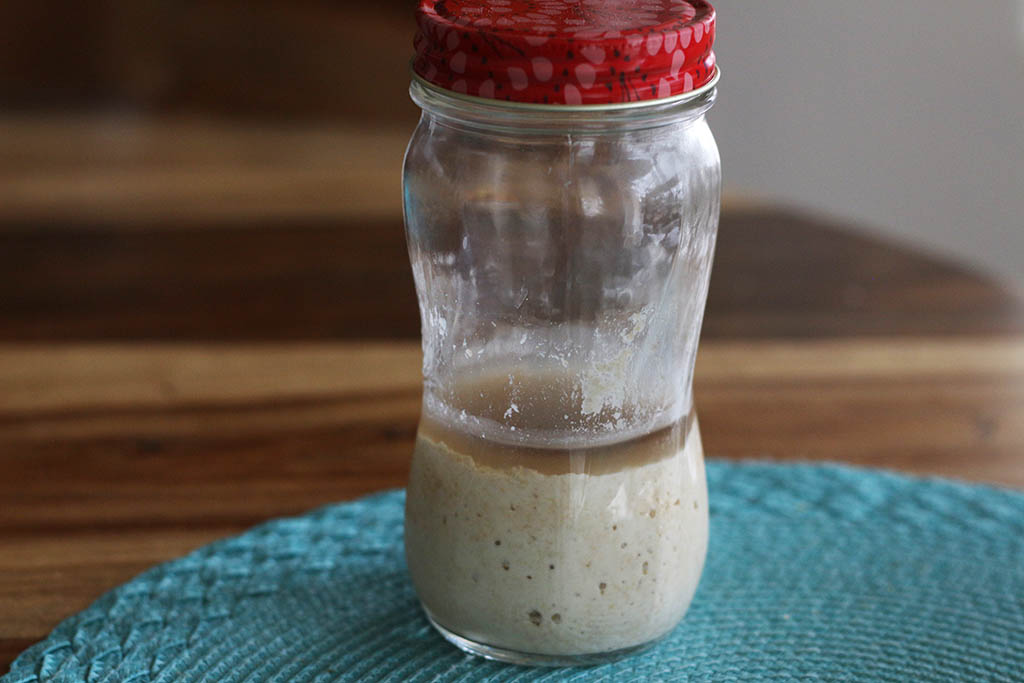
What is the brown liquid on top of my starter?
This is called the hooch and it’s the sign of a starving sourdough starter. It needs to be fed because it has consumed all the nutrients in the flour. Pour off this liquid and replace it with water, or just mix the hooch back into the starter; then add fresh flour and more water because your starter is hungry.
Your starter may go flat in the summer after being bubbly only a few hours ago. Again this means the warm weather made the yeast virtually run out of food. It's fed on the carbohydrates, producing lots of bubbles in the process, and then runs out. It's got nothing left to feed on. This is why we feed or refresh the starter by giving it more flour and water. Fresh flour is like new food for your starter.
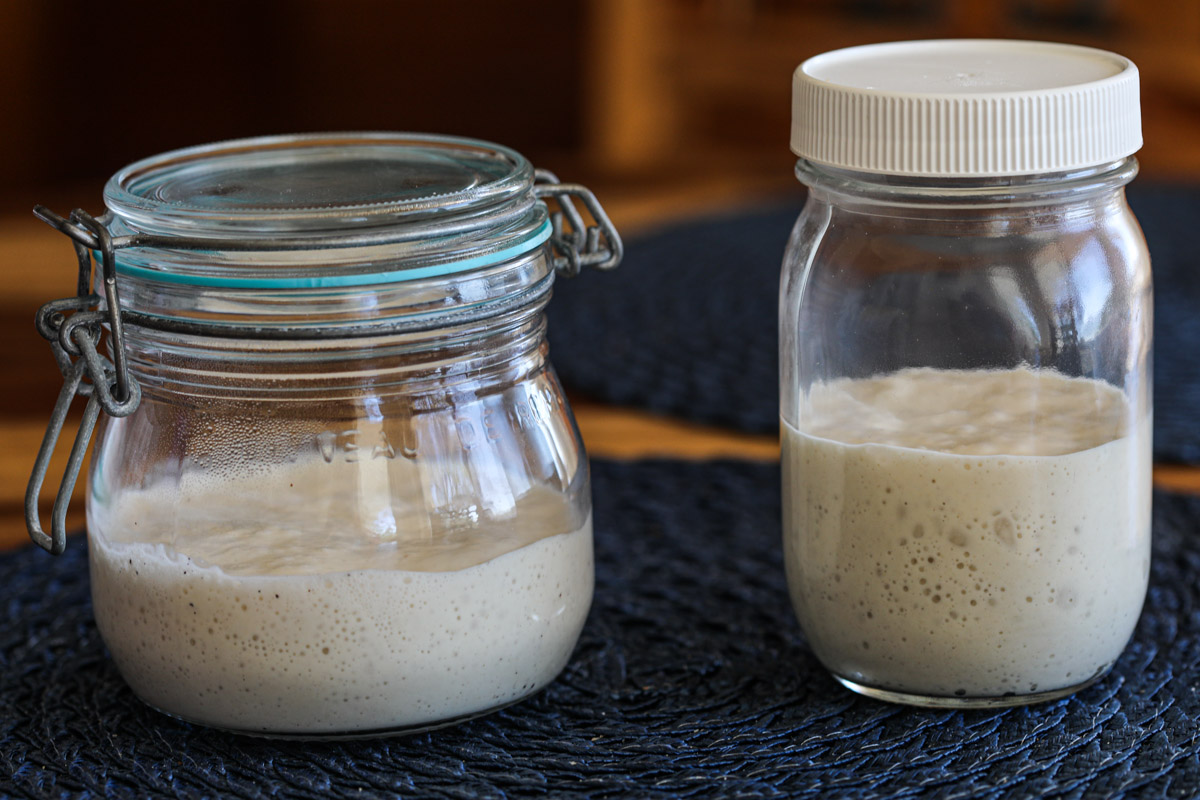
How often should I feed my sourdough starter?
You should feed your starter twice a day, every 4 - 8 hours if it's on the counter. If you are storing your sourdough starter in the refrigerator, you should feed it at least once a week. If you forget to feed it, take it out of the fridge and feed it once in the morning and once at night for a few days to revive it. It should then be strong and ready to use again to raise your bread.
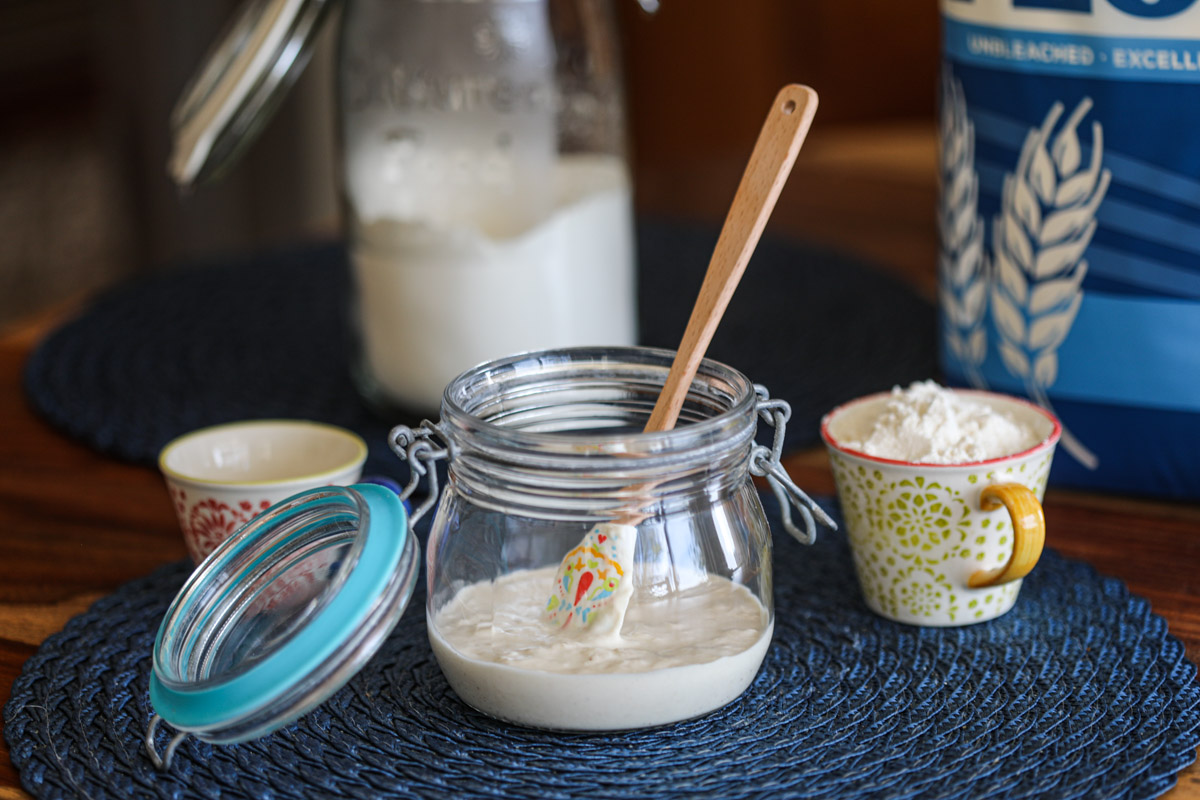
Types of Flour to Feed Your Starter
I feed my starter Premium Natural White All-Purpose Flour. You can feed your starter whole wheat flour which contains many minerals, but always look for high protein content in your flour. Ideally, your flour should have 11-13% protein content to make the best bread with the highest rise. The flour we use has one of the highest protein contents (13.33%) available.
You can also use bread flour or a good quality unbleached white flour, whole wheat flour, or rye which is wonderful too. You'll need to use a flour that does not add chemicals or one that is bleached; otherwise, your starter might not get bubbly. Bread flour is what is most commonly used by bread makers because of the high protein count in the flour. A high protein count makes the bread rise higher. Whole wheat flour will make a more dense loaf that doesn't rise as high. White wheat flours work better and Prairie Gold Wheat Montana is a good one to use if you want to use mostly wheat flour.
Don’t use sprouted flours to make sourdough bread. The process of sprouting breaks down the grain and then it doesn’t work as well for the sourdough culture.
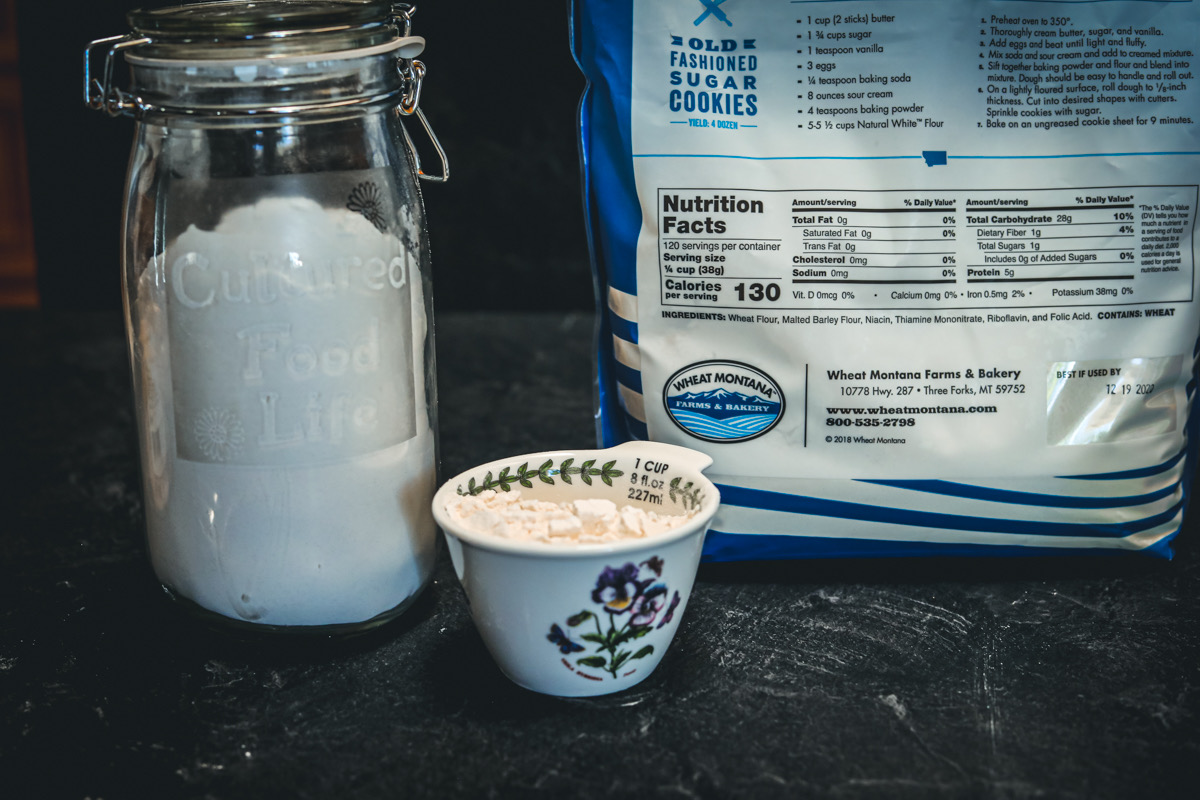
How To calculate the Percentage of Protein in Flour
If there are 4 grams of protein per 30 grams of flour, you need to multiply 4 by the number 100 and then divide by 30 (see example below).
4 g protein per 30g (¼ cup) flour
4 × 100 = 400
400 / 30 = 13.33
This flour has a protein content of 13.33%.
Use this formula to determine the percentage of protein in flour:
(x) grams of protein per (y) grams of flour
(x) x 100 = (z)
(z) / (y) = % of protein content in the flour
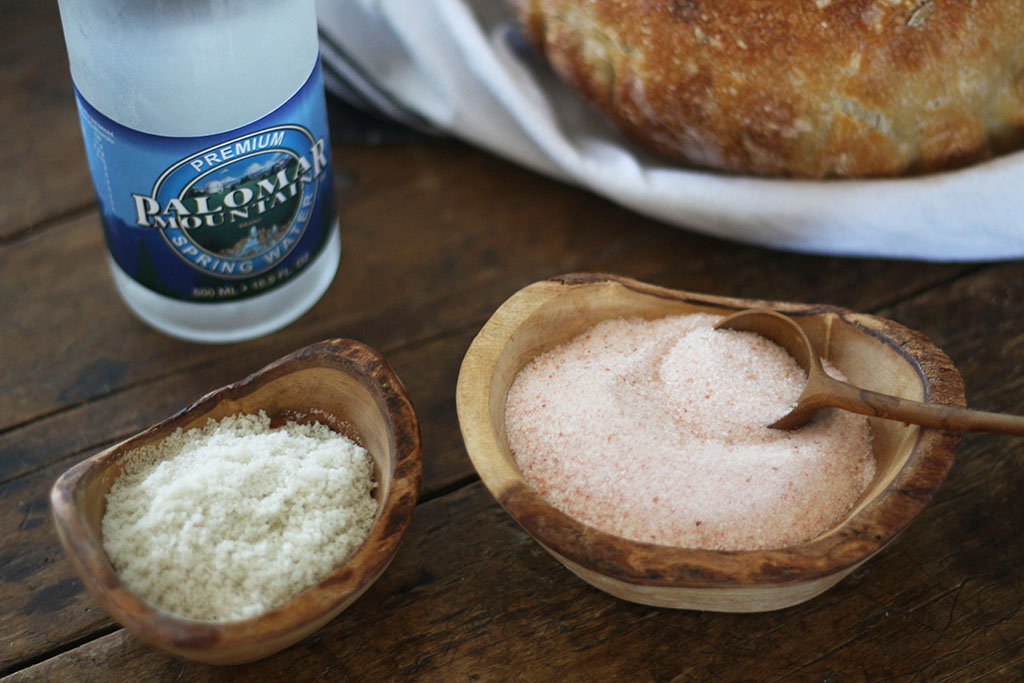
Water and Salt to Use in Sourdough Bread
You can use almost any type of water to feed your starter, although filtered or purified water works the best. I've even used tap water but some bakers say this is not the best. Spring water with minerals is my preferred choice. Fermentation loves minerals and will help with the end product.
My two favorite salts to use are finely ground Celtic Sea Salt and Himalayan Salt. I think salt with minerals is important, but almost any salt will work. I just think that since my body and cultures love salts with minerals, I should give my bread the very best I can find.
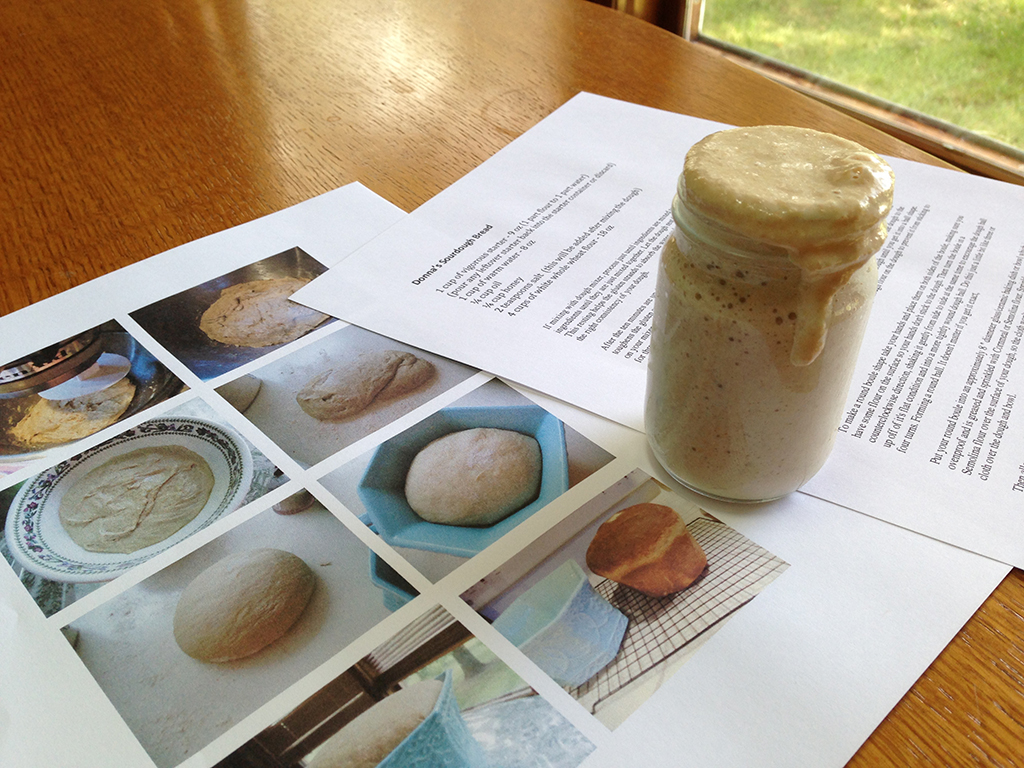
Feeding Your Starter Before Baking
Feed your sourdough culture four to eight hours before you want to make your bread. I keep my sourdough culture in the refrigerator and I feed it religiously once a week with the 1-1-1 ratio. Use 1/2 cup of starter and replenish it by stirring in 1/2 cup water and 1/2 cup flour. Then place in the fridge. It's very important to NOT use more starter than flour and water. It always stays active if I do this.
The day I want to bake with it, I take it out of the fridge, feed it, and let it warm up on the counter till it's nice and bubbly and rises in the jar. This can take four to eight hours. It all depends on the nature of your starter and the temperature in your home. Some days it will rise and bubble quickly and other days it will take longer. I recommend using it within an hour and a half of it rising before it falls again. This will give you the best success.
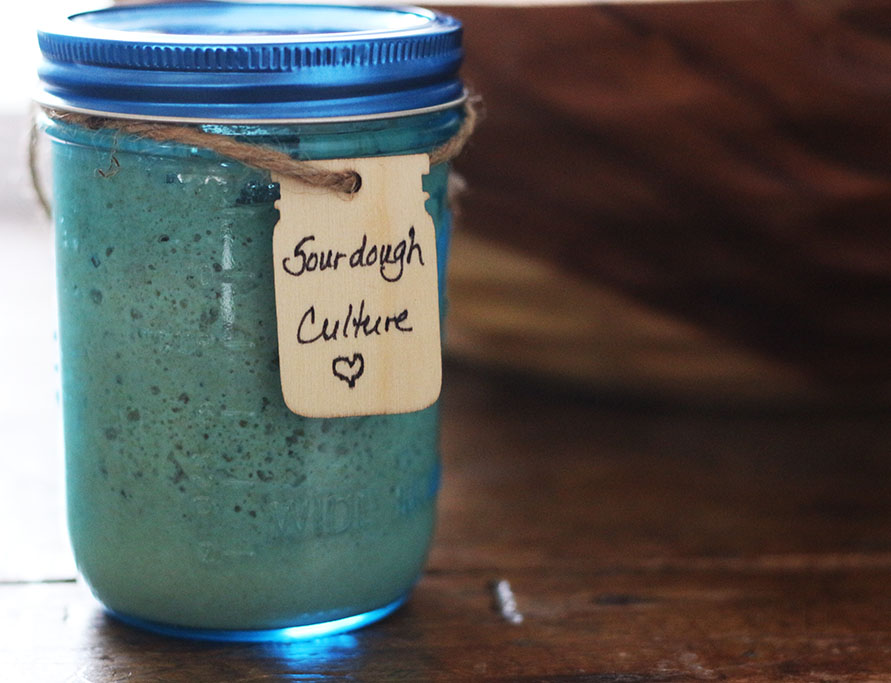
Feeding Your Starter Without Baking
If you have been busy or away, you can always feed your starter without baking anything. Stir the mixture together, remove enough starter to leave only 1/2 cup of starter and replenish it by stirring in 1/2 cup water and 1/2 cup flour. Then place in the fridge. It's very important to NOT use more starter than flour and water. Use a ratio of 1-1-1. If you use too much starter it will consume all the food and not be as bubbly.
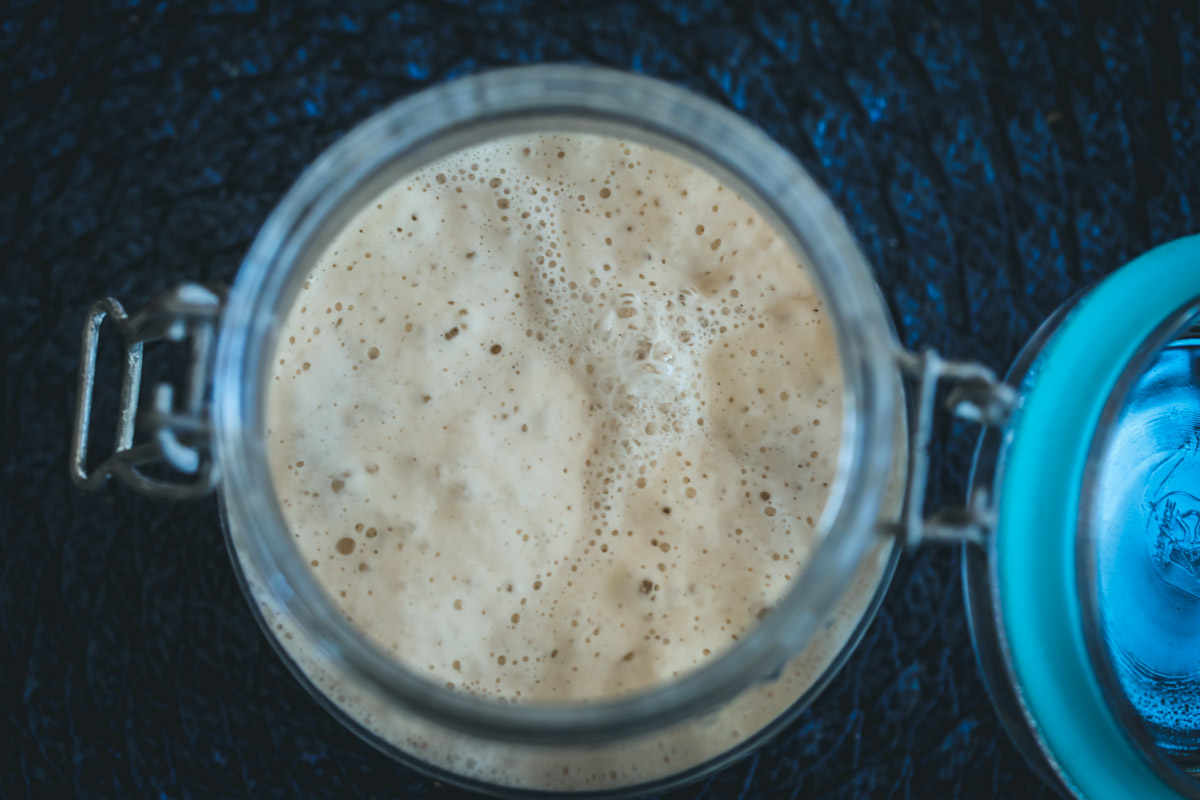
Increasing Your Starter
Let's say you wanted to make THREE cups of starter to make several batches of bread. By combining 1 cup of starter, 1 cup of flour, and 1 cup of water you will make 3 cups of starter. It's very important to NOT use more starter than flour and water. Use a ratio of 1-1-1.
If you use more starter, it will be extra active because there is more starter than flour. It will eat all of the flour and not be as vigorous as it could be.
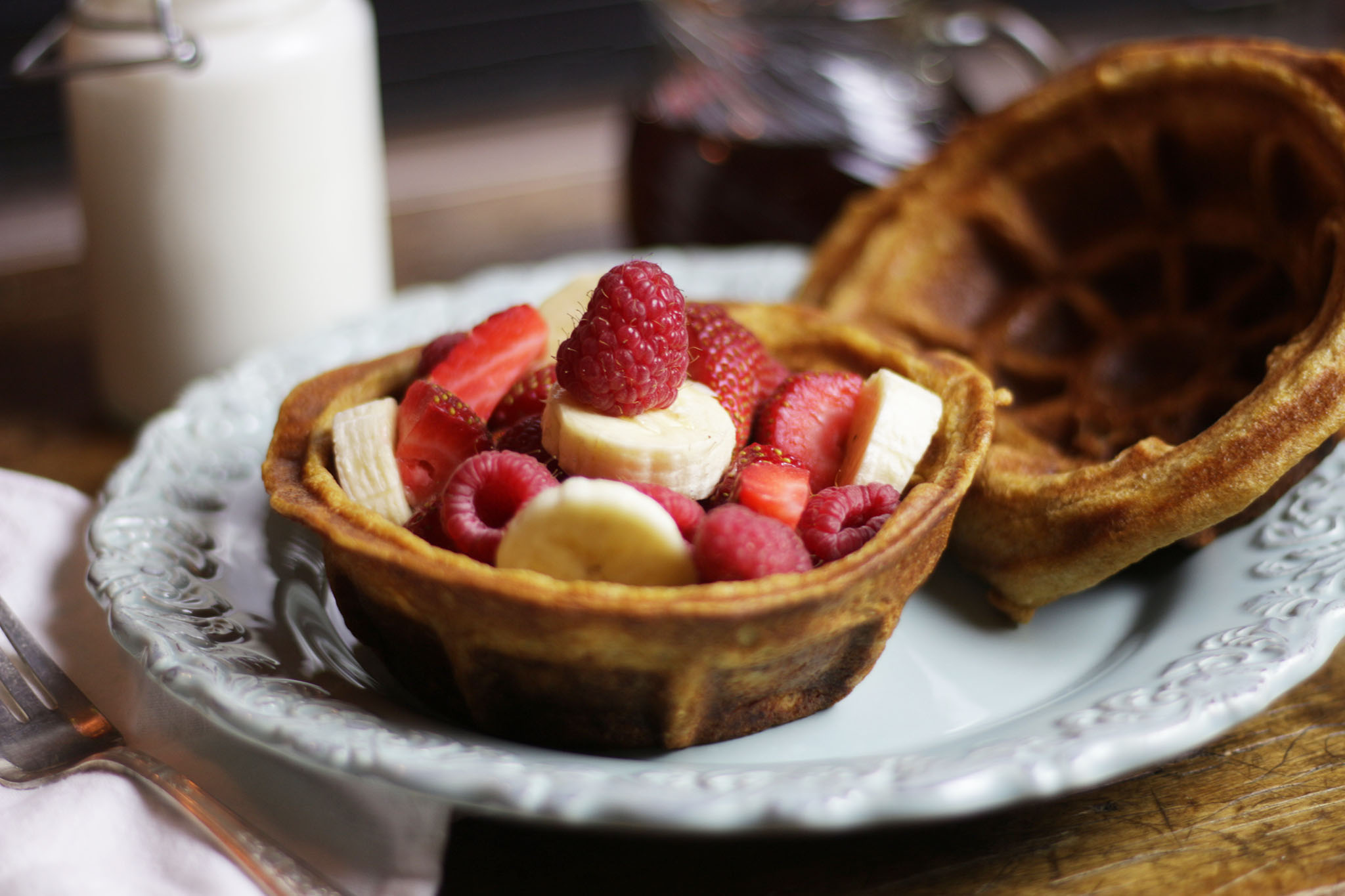
I Have Too Much Starter
Here are a few of the things you can do with the extra sourdough starter. A great way to use up your leftovers is waffles or pancakes, or I have three other recipes that are not only easy to make but also really delicious. Super Easy Snickerdoodle Cookies and Peppermint Sourdough Brownies are perfect for the holidays or any time. You can also make Sourdough Dumplings with extra starter and it will turn any soup into a warm, comforting meal. Don’t waste your sourdough starter, put it to good use!
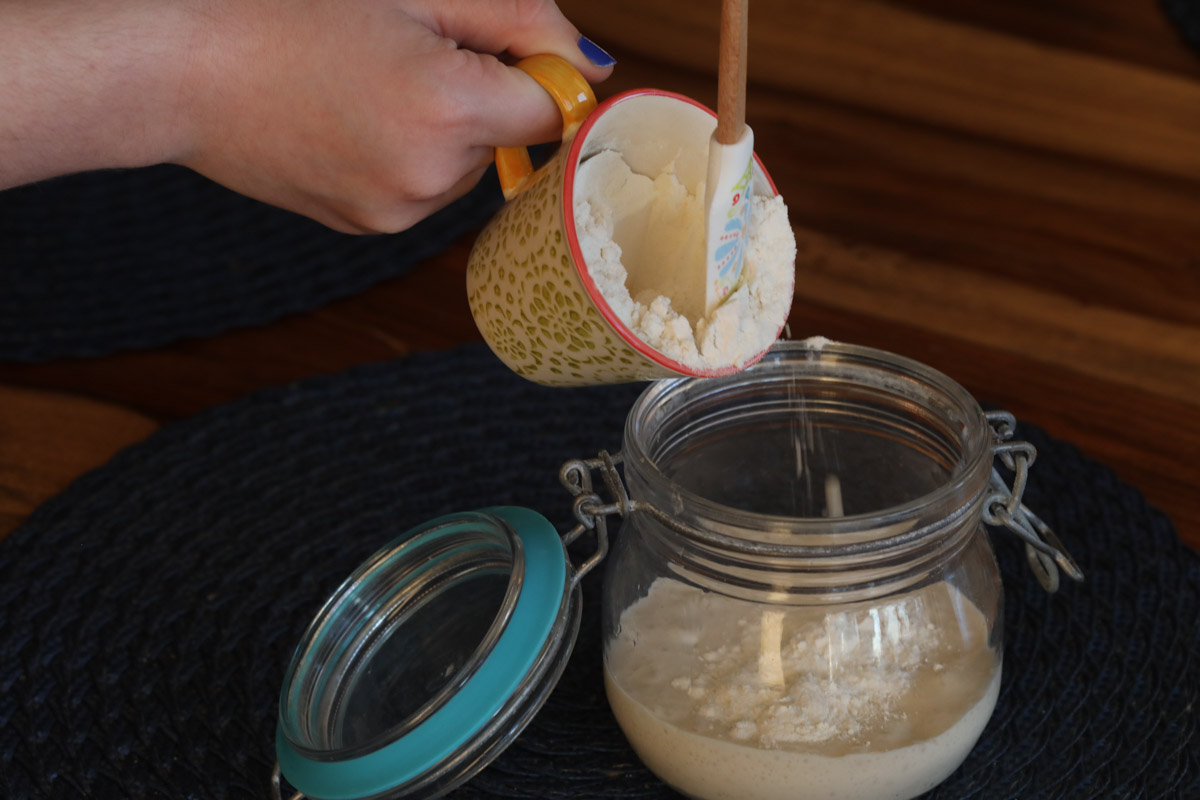
Helping a Neglected Starter
If it's been a few weeks since you fed your starter, I recommend reducing the starter to 1/4 cup and adding 1/2 cup flour and 1/2 cup of water. Leave it to ferment for six to eight hours and see how it does. It should perk up and have lots of bubbles. This method overwhelms it with food and really gives it a stronger start if your starter has not been acting right. Do this every eight hours (twice a day) until it's bubbly all over on the sides and on top of the jar. It may take a few times of doing this over a couple of days, but it should come back to life with twice a day feedings using the ratios of 1/4 of a cup starter, 1/2 cup flour, and 1/2 cup of water. Don't use too much starter!
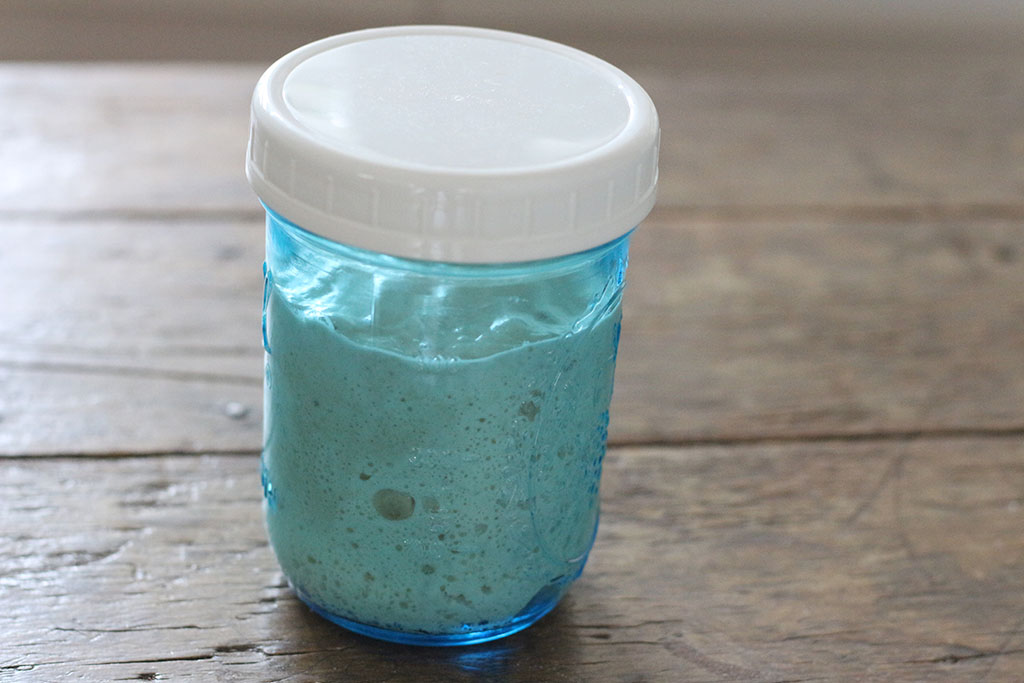
My Sourdough Bread is Too Sour or Not Sour Enough
If your bread is too sour then you may be using a newly made starter. Aged starters are not as sour tasting and actually make a better-tasting bread. The starter that I sell in my store is over twenty years old and has a milder taste. If you want a more sour taste in your bread then you'll need to use a recipe that uses more starter (1 cup of starter) and longer fermentation. Try my Refrigerated Sourdough Bread or one of the other recipes that uses one cup of starter.
Listen To My Podcast
Sourdough bread is worth the effort and the joy you'll get is hard to describe until you pull your first loaf from the oven. The secret to good sourdough bread is in the bubbly sourdough starter, but there are a few other things you need to know to make it easy and fun for you to make delicious sourdough bread. Listen in and learn all the tips tricks and I'll answer many of the questions that are frequently asked. Sourdough bread is love made visible.
References I talked about:
Are you on the list?
Sign up today and I'll send you my free Getting Started Guide!
Each week I'll send you updates, tips, recipes, and more! You might even be a winner of my weekly giveaway! (starter cultures, memberships, and more!)
Come be a part of my cultured food family!

